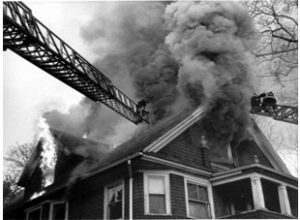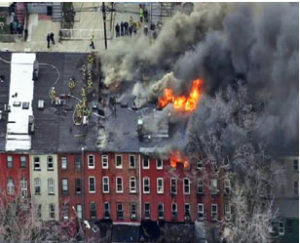Concealed Spaces and Voids:
When we reference Class 3 or 5 construction, we must remember that these structures are generally older class buildings; meaning that they have been around for a while. The fact that they have been occupying the same space for a number of years causes us not to only question their overall integrity, but also to consider the probability that a significant number of alterations may have been made to accommodate the building’s changing needs. As need would dictate change, many have been altered to improve the tenant/owner use of the property. The change might have been to save on heating costs by lowering the ceiling height with a new suspended ceiling, the replacement or addition of new plumbing and electrical fixtures to modernize the structure, or by taking a larger area within the building and dividing it to accommodate a change of occupancy. Regardless, firefighters must be ready to respond and anticipate numerous concealed spaces and voids allowing fire to quickly spread throughout the building’s void spaces. Predicting and controlling fire spread will be a significant challenge for firefighters arriving at a Class 3 or 5 constructed building. Fire will have plenty of opportunity to spread throughout the building from the many concealed spaces and voids this particular type of construction presents. Whether the fire originates in an “alteration void” such as a suspended or dropped ceiling, or in a “design void” such as a cockloft or attic, the challenges and concerns will be the same. If you don’t get to it quickly, fire will take possession of the building.
 With the fire’s anticipated movement, will come the daunting task of “opening up” above, below, and alongside the fire’s origin. Obviously, this is much easier said than done. With the probability of not one, but multiple voids occupying the same space, the tasks become time consuming as well as dangerous.
With the fire’s anticipated movement, will come the daunting task of “opening up” above, below, and alongside the fire’s origin. Obviously, this is much easier said than done. With the probability of not one, but multiple voids occupying the same space, the tasks become time consuming as well as dangerous.
Depending upon the size of the space, the air that you will introduce into the space, and the fire’s growth, concealed spaces and voids can present explosive conditions when penetrated. Conditions ripe for rapid fire growth or even a back draft will be present within the floors, walls and cockloft. When explored by a firefighter, these areas could violently explode bringing structural members down with it to say nothing about how fire could rapidly extend throughout the space. Fire Department operations must be controlled and coordinated when fire involves void spaces. When you suspect fire has taken possession of a void space, before you “open it up”, you need to have a plan in place or you’re going to get into trouble. At a minimum, consider the following:
Opening Up Concealed spaces and Voids:
- Have a charged hose line staffed and ready.
- Identify, request, establish alternate means of egress from the area. – Know how you are going to get out if things go bad. This can and should include ground ladders, adjacent rooms, fire escapes, etc.

- Always open up from refuge/retreat areas. – Examples can and should include doorways or hallways into the questioned area. Also windows that again, lead to a ground ladder or fire escape.
- Consider the type and size of the space before you open it up. There is a big difference when “pulling” a wall bay as compared to “pulling and opening up” a large cockloft or attic. The type and size of the spaces will vary. Once you introduce air into the space, the race is on. You need to know and understand building construction and the inherent spaces throughout.
- Anticipation – getting ahead of it.
 What we mean by this is do you have or have you requested a second hose line with another group of members with hooks to pull the
What we mean by this is do you have or have you requested a second hose line with another group of members with hooks to pull the
adjacent room(s), hallway, etc. Again, consider the type and size space your opening up and your ability to completely access it. - For top floors and cocklofts, coordinate efforts with the outside and vertical ventilation teams.
- When possible, assign your most experienced members to these type of tasks. Most notably when the void spaces are large.
Stay Safe!
Mike Terpak
Deputy Chief-Jersey City
